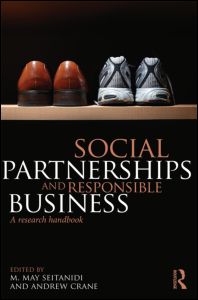Networking as an active verb for global change is something that we are still in early days of exploring. And of course networks can come in many forms – some are purposely structured to facilitate control. But change strategies like those of Global Action Networks require a networked mindset that a great report describes as working wikily: “characterized by principles of openness, transparency, decentralized decision-making, and distributed action.”
Living these principles requires effort for most of us who carry elements of an organizational mindset. That prevents us from developing the potential of networking. Here are six elements I find useful to remind myself about, when I feel I may be slipping back into an organizational mindset.
Share Power
Change networks usually have few carrots or sticks. Most depend on voluntary energy and enthusiasm. But people and organizations have lots of ways they can spend their time and resources. They won’t bring all of that to the table, if they don’t feel like they have an appropriate amount of influence. Through a leaderful culture, a liberating structure and an inspiring vision, people become engaged.
One exception to the lack of carrots is with financing networks, like the Global Fund to Fight AIDS, that distribute large amounts of money. For them, the challenge to appropriately share power is even greater, since power is traditionally associated with controlling allocation of resources. To avoid this requires emphasizing peer-like relationships and decision-making. One rule the Global Fund has instituted is that both recipients and donors on the Board must agree to the person hired as Director.
Sharing power requires resisting many learned proclivities. For example, Global Reporting Initiative Chief Executive Ernst Ligteringen who is stewarding development of standards frameworks comments: “Standard-setters have centralizing tendencies.” It is important to point out when participants bring anti-network assumptions and behaviors.
Sharing power means empowering stakeholders who have traditionally been marginalized. And for the powerful sharing power means changing behaviors to encourage participation. This often involves building the capacity of the traditionally marginalized and the powerful to interact productively.
And sharing power involves sharing information as well. Alexander Kashumov, with The Access Initiative in Bulgaria, points out that “Trust is dependent on how satisfied the participants are about sharing information.”
Be Accountable, Maintain Integrity
Accountable,
Maintain
Integrity
Ania Grobicki, Global Water Partnership Executive Secretary comments: “Absolutely the first quality is personal integrity. For people to be able to trust what you do and what you say. It’s absolutely essential.” In a network, peer-like relationships dominate. No one is above questioning by other participants. But accountability must be facilitated through regular meaningful reference during decision-making to not just objectives, but also principles and values.
Partner Yourself
Particularly once a network realizes some success, it can become inward looking. It may increasingly feel it does not need others. However, for growth, openness to partnering with others is critical. This requires listening and identifying opportunities, as well as responding to those proposed by others.
The partnering also means pushing the boundaries about how you work with participants. Cobus de Swardt, Transparency International Managing Director gave a great example of this, being leaderful, and giving up power in preparation of Transparency’s annual report. “The annual report before I took this job had four pages on national chapters and about 40 pages on the Secretariat. The first one I had a role with had exactly the opposite, but it was still structured in accord with how the Secretariat is organized. This year the report was prepared by the network and you can’t even see that there’s a Secretariat.”
Acknowledge the Roles of Individuals and Hierarchy
The dominate dynamic may be networking, but that does not mean that individuals and hierarchy have no role. As explained in an earlier blog, networks integrate partnerships and, in their nodes, hierarchy.
A nuanced balance is needed. In an article titled The Ignorance of Crowds, Nicholas Carr writes: “…peer production is a good way to mine the raw material for innovation, but it doesn’t seem well suited to shaping that material into a final product. That’s a task that is still best done in the closed quarters of a cathedral, where a relatively small and formally organized group of talented professionals can collaborate closely in perfecting the fit and finish of a product. Involving a crowd in this work won’t speed it up; it will just bring delays and confusion.” (Carr 2007)
Create Coherence
Remember that social change networks are about creating alignment in direction and collective energy of all the participants. Don’t get lost in trying to coordinate the activities of the network, although you may do that for a subset of participants. In the midst of great complexity a network steward’s role is to identify strategic projects that can cause shifts in speed and alignment amongst and beyond direct participants.
Be Role-Centric
Perhaps the most important thing that Verna Allee has taught me through her work with value networks is that networks are not the sum of the organizations within them. Rather, they are the sum of the roles that participating organizations play in a network. The focus is on defining the roles that are necessary for the network to be healthy, and stimulating participating organizations singly or collaboratively to play the needed roles. Understand the role that organizations play vis-à-vis the network’s purpose, and encourage them to play the role really well collectively.









